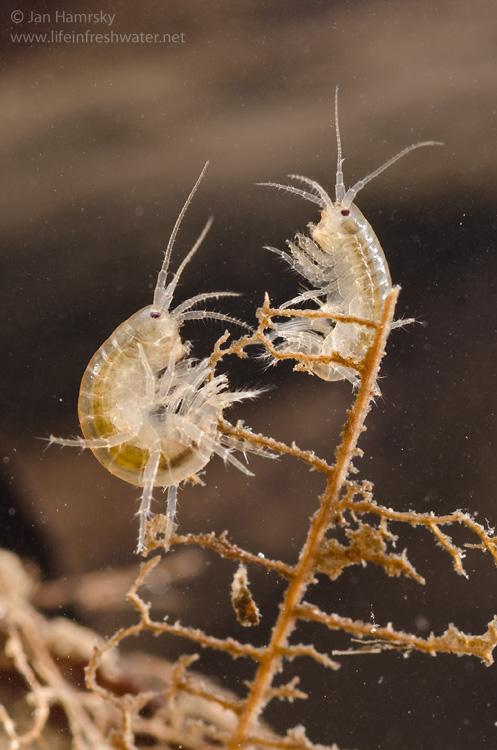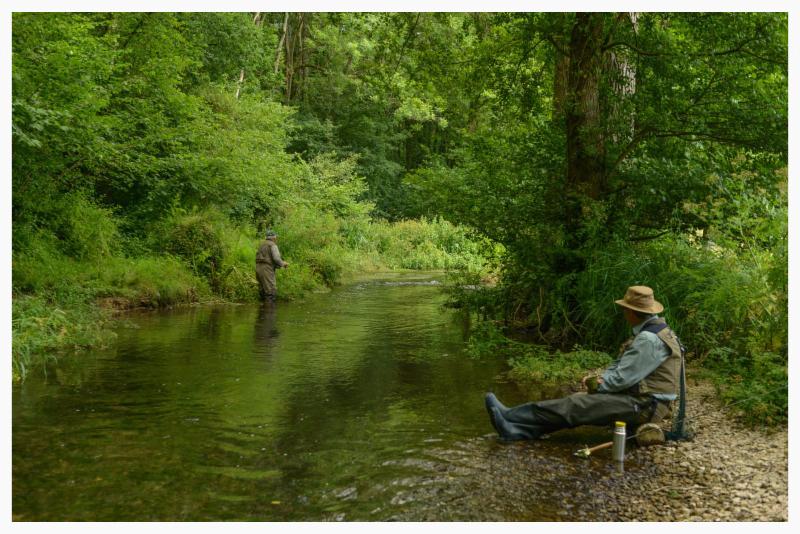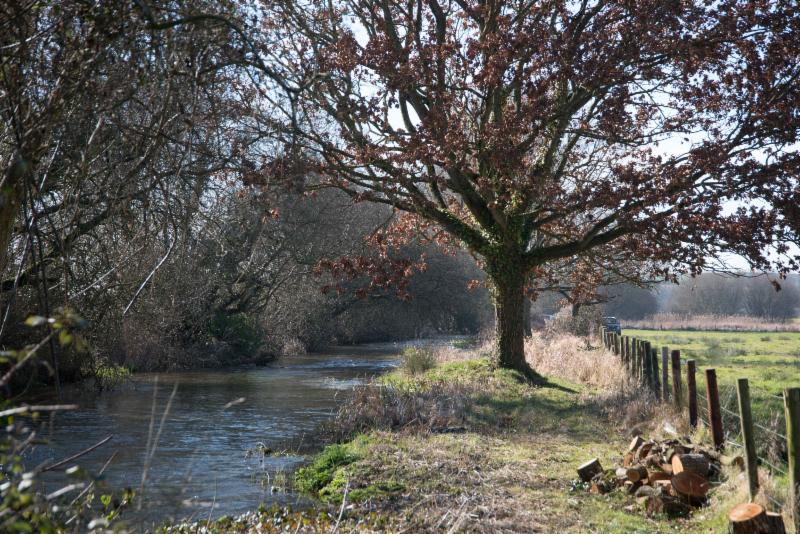Better news than you might think
Greetings!
A couple of
years ago I had the temerity to question the 'spin' put on the publication of
research document that was the result of a survey on the upper part of the
gorgeous River Itchen. It had revealed a disastrous decline in the shrimp
population, a vital food source for trout and something of an indicator
species.
|
|
 |
|
|
River Itchen
|
I was as upset as anyone to
read this news but one of our most revered campaigning organisations took it
upon itself to issue a press release that extrapolated this local disaster into
a nationwide Armageddon for the chalkstreams. It was clearly tosh. A great
headline grabber that all the national media ran with. But all the same, a
complete and utter misrepresentation of the facts.
And I said so both in print
and to any poor sod who would listen. All manners of hell was rained down upon
me. I became whatever the chalkstream equivalent of a climate change denier
might be. Emails were sent. Letters arrived. Someone was dispatched to take me
out to lunch to give me 'the talk'. One owner even withdrew his water from the
Fishing Breaks portfolio. In the end we all gently moved on. Then last week the
Catchment Invertebrate Fingerprinting Study of the River Meon dropped
through my letterbox.
I know it is not the most
catchy title but please don't switch your brain off just yet; it's really just
a study into the health of this small East Hampshire river and contains better
news than you might at first suppose. There are essentially six measures to
determine how a river is doing: sediment, low flows, phosphates, organic
pollution, pesticides and bug life.
|
|
 |
|
|
Gammarus hanging out
|
Sediment is the mineral and
organic material washed into the river from all manners of sources, both
natural and man-made. It sounds bad but it is essential to the life of the
chalkstream - Mayfly nymphs for instance burrow into the silt. However, too
much, particularly at the wrong time of year can stifle weed growth, suffocate
eggs and clog the gills of fish. Fortunately the Meon has been monitored for
nearly two decades so we know where we stand on sediment - since 2002 it has
decreased and the conditions for fly life have improved.
A chalkstream derives 80% of
its flow from the aquifers, the springs recharged by rain that falls over the
winter months. Hoarding that invisible reservoir is the key to avoiding
difficulties in dry years. So river restoration helps by holding back the
flows, abstraction licences have greater scrutiny and the sympathetic
management of the wetland catchment does its bit. Result? Since 2002 the
pressure from low flows has decreased.
Like sediment the instant
reaction to the word phosphorous is one of panic; it must be bad. Actually it
is an essential component to all human, animal and plant life. However, there
is a tipping point when too much phosphorous encourages the dense growth of
plant life in the river which in turn dies, then decomposes sucking oxygen then
life out of the water. Just about everyone is responsible for phosphorus -
industry, farming, water companies and us through domestic sewage but despite
that multiplicity of sources there had been no change in phosphorus pressure
since 2002.
I don't think I need to
explain in too much detail what animal and human organic pollution might be;
its effects are fairly similar to that of phosphorus plus the physical ability
to smother the river bed. There have been great strides in both sewage
processing and farming activities; I'm sure you have fished rivers that are now
fenced off from cattle. The upshot is, that despite a big increase in the
population of the Meon valley over the period of the data gathering there has
been no significant change of biological conditions being altered by organic
pollution.
I did rather anticipate that
the pesticide measures might tell a different story to the above four but
apparently not; the pressure on the river has either (surprisingly) decreased
or remained stable within the Meon catchment since 2002. However, there is a
caution that the nature and use of pesticides, primarily in agriculture but
also gardens, golf courses, sports pitches, roads and railways, is prone to
rapid change or has long-term effects of which we are not aware.
Finally there is the bug
life, ultimately the mother lode for us fly fishers. The historic Environment
Agency data from invertebrate monitoring of the River Meon 2002-2015 concludes
that 'environmental pressures have deceased or remained unchanged ....
resulting in improved conditions for those invertebrate communities.' The much
talked about Gammarus that caused all the furore on the River Itchen are
generally in rude health on the Meon.
So, what to conclude from
all this? Should we all being doing high fives? Some might say that a comparison
back to a time as recent as 2002 is no comparison at all. I'm not sure that
would be a true assertion. Chalkstreams have been my business since 1990 and my
refuge since 1973. I don't recall a golden age, one better than this, in all
that time. The fact is that the Fingerprinting Study proves beyond doubt
that we are not locked in the inexorable downward spiral that some might have
you believe.
The six indicators show,
even on the most glass-half-empty reading, that we have at worst reached a
point of equilibrium. However, we should not be complacent. The dangers are
still there. Bad things are happening. Pollutants and practices that have no
place in our precious countryside still need to be eradicated. None of us
should pause in our efforts to lobby, pressurise and reform where we can.
Support those organisations that can help. Do our little bit by adapting our
lifestyle to protect the things we wish to preserve.
 |
|
Summer
on the River Meon
|
But just occasionally it is
worth lifting your eyes from the fray. Gaze upon the wondrousness of the
chalkstreams and salute the fact that, in one of the most densely populated
parts of the planet, they survive at all. And so let's just pause to take stock
and to thank those, many of whom are long dead, for being the guardians of what
we have today. They appreciated and preserved with cool heads. We should do the
same.
Not so
new broom
After 32
years working on the Shaftesbury Estate in Dorset, which includes the source
and first three miles of the River Allen, Stewart Hand has taken early
retirement. Weirdly this is great news for this lovely piece of river because
Stewart, still an ox-strong sixty, has swapped his multiplicity of Estate jobs
to return to his original passion - river keeping.
 I think we can hold our
hands up to say that in the past few years the river hasn't been the way we'd
like it.
I think we can hold our
hands up to say that in the past few years the river hasn't been the way we'd
like it.
The demands on Stewart's
time were such that he couldn't do the river justice and it suffered. But now
Stewart has, with the help and agreement of Lord Shaftesbury, taken over the
fishing as his own project. Being realistic it is a three year plan. Essentially
the fishing divides into two sections spread over four beats.
At the top, where the river
emerges from the ground, is the Village Water. It is long (more than a mile)
but very narrow and very wild; you can read about my fishing adventure last
year here. Beyond sorting out the access and stiles
don't expect any change this year; this is marked down for work in years two
and three.
Below the Village Water the
river disappears from view for half a mile as it flows through the private
grounds of Shaftesbury House. At one point it does truly disappear from view,
flowing through a tunnel under this Elizabethan stately home. The tunnel hasn't
always been a great success; until the recent renovations the best furniture on
the ground floor stood on four inch oak blocks in anticipation of the worst.
The river then flows into the lake which is famous as the venue for an episode
of Passion for Angling, the one where Bob James and Chris Yates deployed
a dummy to fool the prize carp.

Emerging from the lake there
are now three beats collectively known as the Home Beats; Upper Brockington,
Lower Brockington and Bowerswaine. Stewart has nearly completed his work on
Lower Brockington (pictured) and will now fan his way out onto the other
two.
For the first time there
will be a fishing hut at Wimborne St Giles, located at the top of Lower
Brockington to be shared by the Home beat fishers. In a world where we are too
often assailed by planes, trains and automobiles it is a delightfully peaceful
spot to relax and make a cup of tea.
For those of you who don't
know this part of the Allen it is the very definition of crystal clear. It is
not deep but best waded; I wear thigh waders or wet wade accepting I'll have to
crab around a few deep spots. Other than that it is mostly small, wild fish
plus some stockies. There is a Mayfly hatch, largely late May to mid-June that
Stewart describes as steady rather than spectacular.
The season opens May 1st.
Prices start at £50/Rod. The Home beats takes one to four Rods. The Village
beat one or two. More details here ......

The Quiz
More
questions to hopefully entertain and enlighten. As ever it is just for fun with
the answers at the bottom of the Newsletter.
1) What is a lacet?
2) In what country is today
(March 1st) National Beer Day?
3) Which country is hosting the
2019 Rugby World Cup?
 |
Have a good weekend.
Best wishes,
Simon Cooper simon@fishingbreaks.co.uk
Founder & Managing Director
Answers:
1)
A tie placed
around the neck of a hunting cormorant to prevent it swallowing the catch.
2)
Iceland. Beer
was prohibited by law until 1989.
3)
Japan.


No comments:
Post a Comment